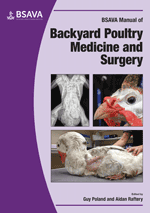
Full text loading...

The majority of behavioural problems do not represent actual disease, but rather the expression of normal behaviours in what may be an altered or inappropriate place. This chapter covers feather destruction, vent pecking and cannibalism, head pecking, eating feathers or foreign bodies, cockerel crowing, peacock screaming, spur damage in cockerels, aggression, broodiness, egg damage and escape.
Behavioural disorders, Page 1 of 1
< Previous page | Next page > /docserver/preview/fulltext/10.22233/9781910443194/9781910443194.19-1.gif

Full text loading...


